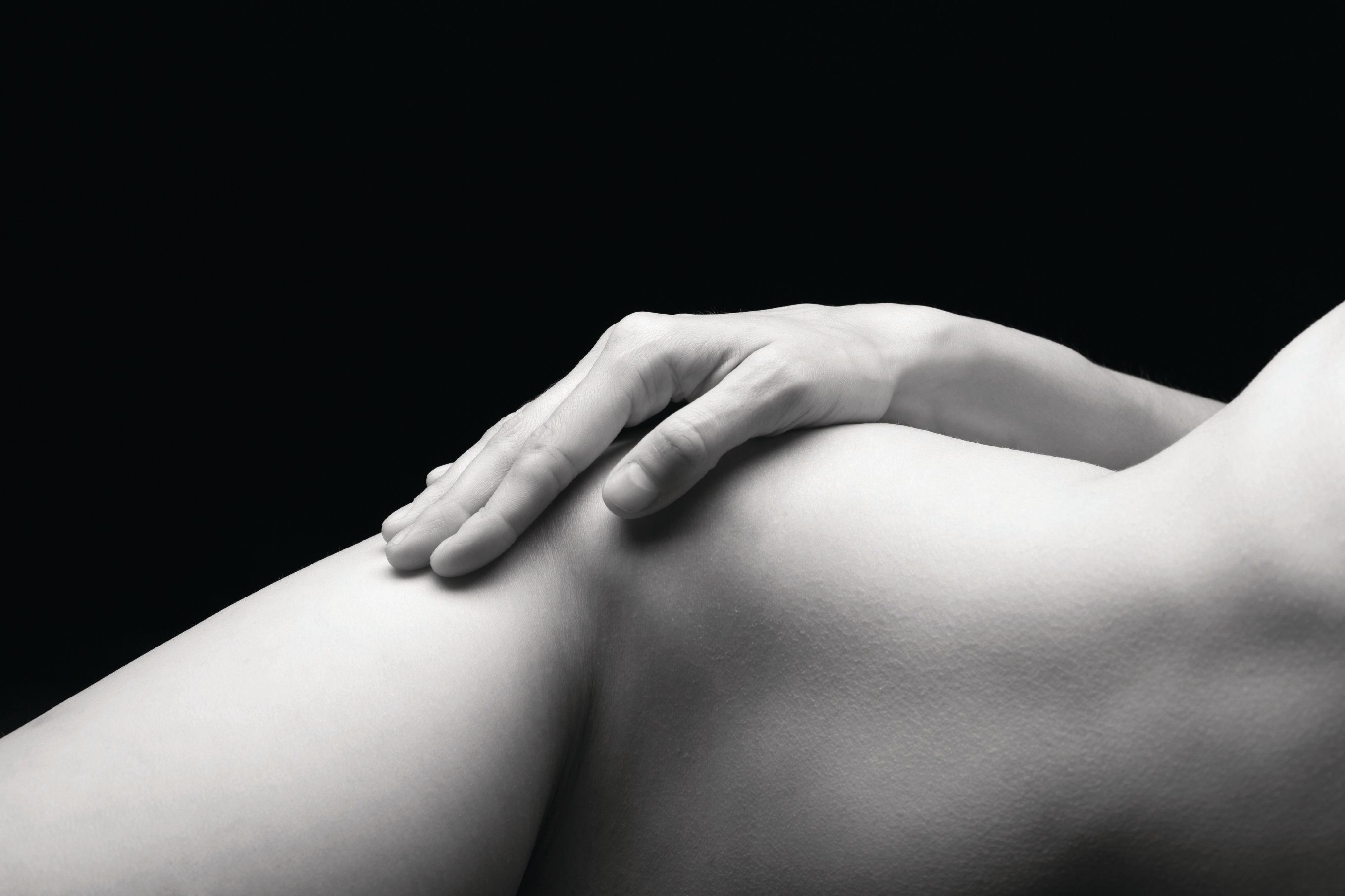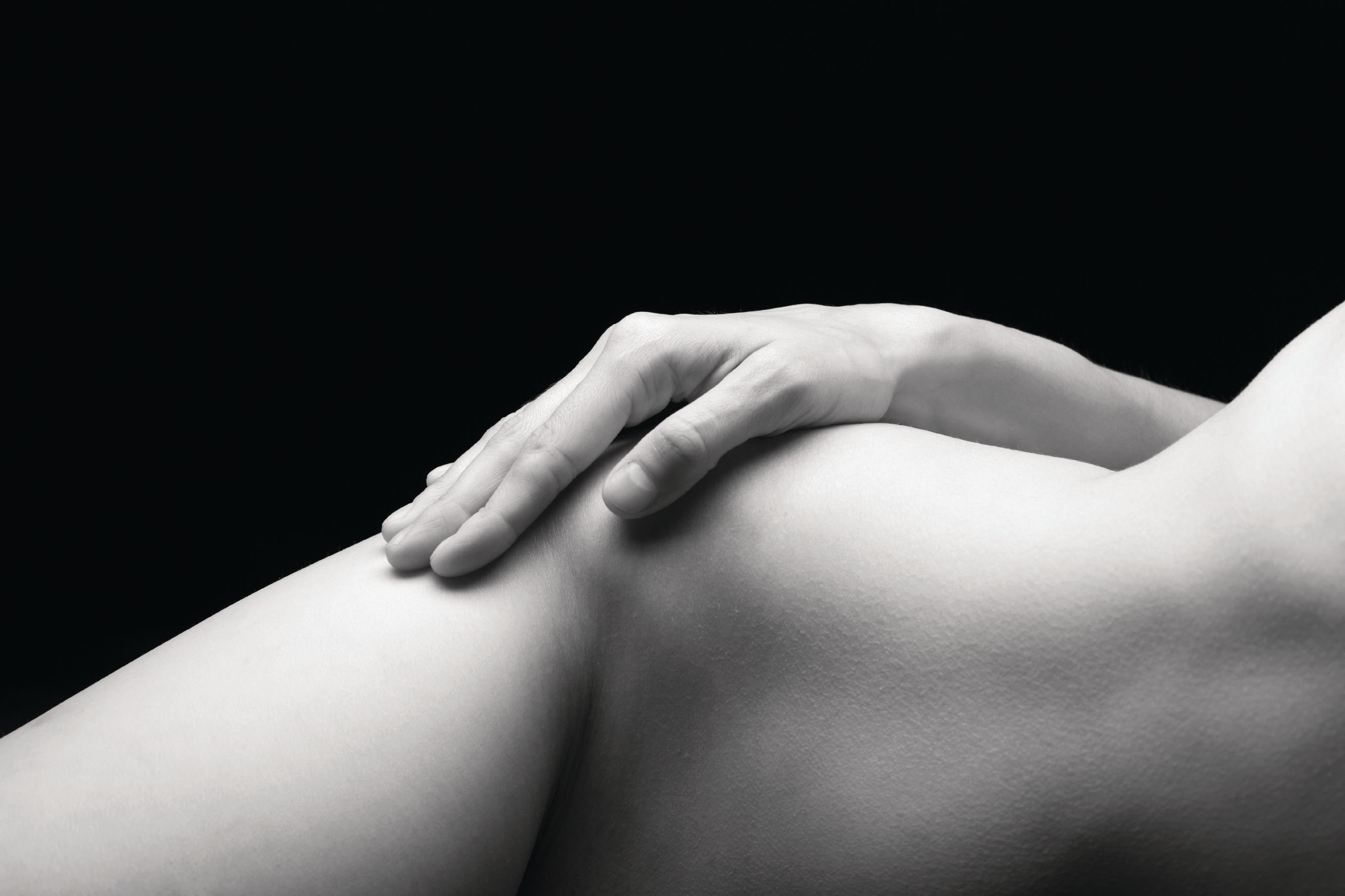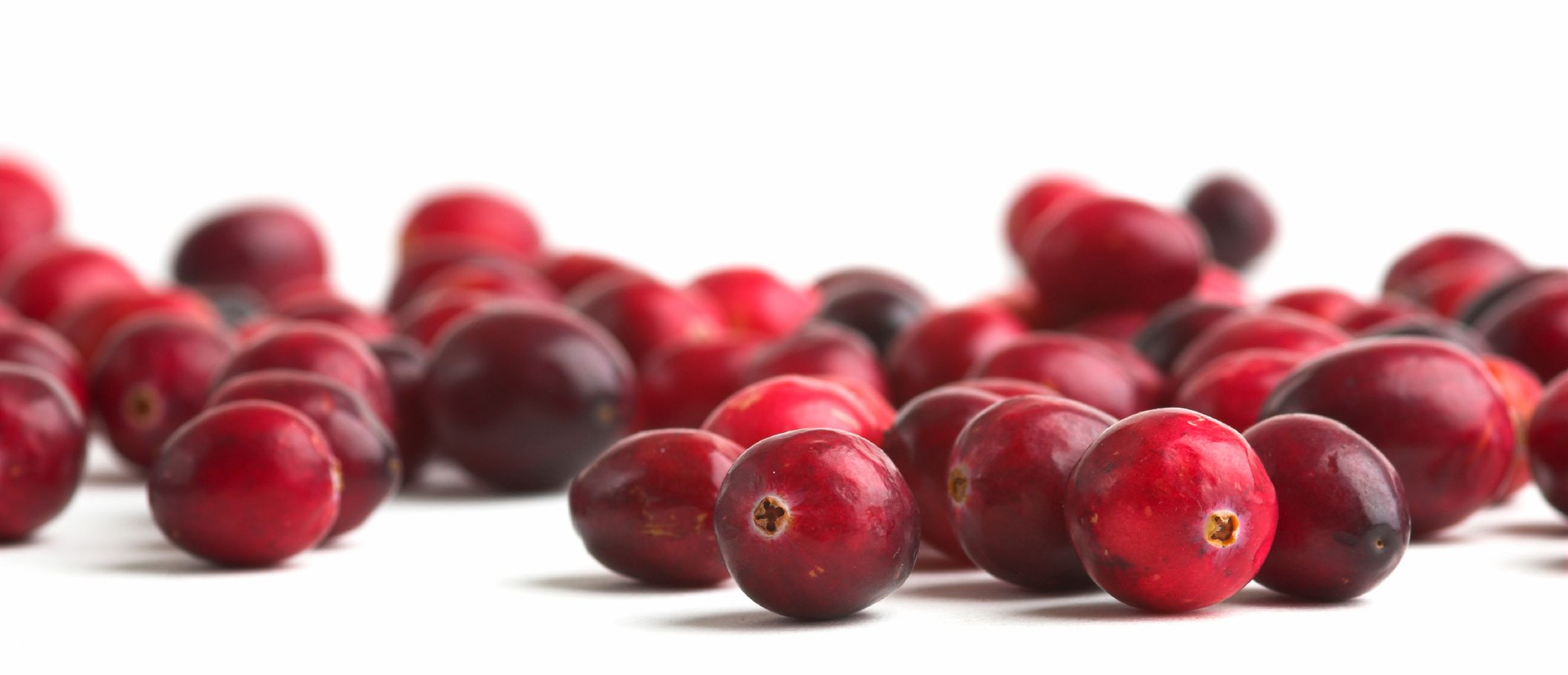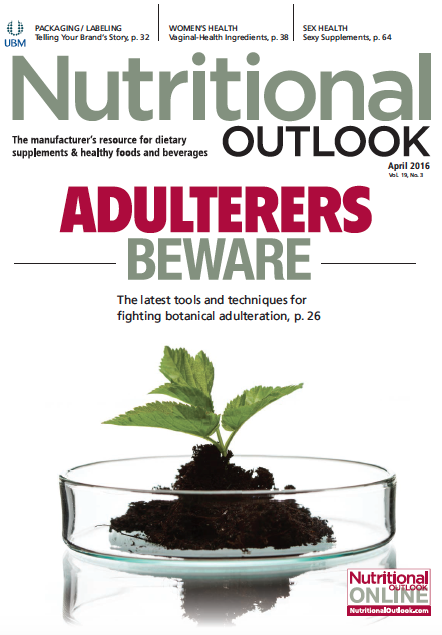Women's Dietary Supplements: Ingredients for Vaginal Health
The latest science on vaginal-health ingredients
Photo © iStockphoto.com/tunart


Photo © iStockphoto.com/tunart
According to the Council for Responsible Nutrition (CRN; Washington, DC), 71% of adult women in America take dietary supplements.1 That sisterhood comprises a spectrum of age groups, ethnicities, economic and education levels-in short, a cohort of women so diverse that they defy any attempt to boil them down to “the typical female supplement consumer.”
Except in one sense: Every one of them has a vagina.
And increasingly, health issues involving that anatomical feature are driving women to the supplement shelf. As Maj Britt Larsen, scientific advisor, Human Health & Nutrition, Chr. Hansen (Hoersholm, Denmark), observes, “The growing availability of dietary supplements for vaginal health is assisting women’s awareness” of the subject and sparking their interest in products to manage that health.
The fact that these options even exist, and have a growing body of science to support them, is a sign of progress-both in the seriousness with which the public now takes women’s health and in the research that allows the supplement industry to serve it. As that research uncovers new relationships between nutrition and the female urogenital tract, the opportunities for supplement users and the companies that court them will only grow.
We’ve Come a Long Way
Time was when vaginal health wasn’t fit for polite discussion. Fast-forward to today, when entire websites and blogs now cover the topic. What does this efflorescence signal to Kimberly Kawa, natural-products specialist at SPINS (Chicago), a leading information provider for the natural and specialty products industry? “I think we’ve come pretty far,” she says, “considering the patriarchal system we live in.”
Those cracks in the glass ceiling haven’t shattered yet, but third-wave feminism, wellness education, the Internet’s “sharing culture,” the relentless march of research-“really, all of the above,” Kawa says-have made vaginal health a more approachable, and understandable, subject. “There’s a vast amount of knowledge available at our fingertips,” she says. “Our natural functions are now being celebrated, not shunned.”
Complicated Conditions
But what, exactly, do we talk about when we talk about women’s vaginal health? Issues surrounding menstruation and menopause are part of the conversation, as are sexually transmitted diseases like herpes, HIV, chlamydia, and the like. But setting those aside and focusing on the urogenital tract specifically, the main concerns, Larsen says, are bacterial vaginosis (BV), yeast infections or yeast vaginosis-typically Candida infections, Larsen notes-and urinary-tract infections (UTIs).
Each condition varies in the severity of symptoms, which range from the mild discomfort, odor, and discharge of BV to the itching and pain of yeast infections, as well as the pain with urination-and frequent urge to do so-that accompany UTIs.
Each condition also carries the possibility of complications. “For UTIs,” Larsen says, there’s a risk of infection of the upper urinary tract, which will result in serious pain and fever.” Stephen Lukawski, global director of sales and marketing, Fruit d’Or Nutraceuticals (Lourdes, QC, Canada), notes an association between BV and increased risk for sexually transmitted diseases, including HIV, gonorrhea, and herpes simplex virus type 2 (HSV-2), as well as for miscarriage and preterm labor and delivery in pregnant women.
Public and Private
Given that BV alone affects 21.2 million, or 29.2% of, women aged 14 to 49-84% of whom report no symptoms-it’s hardly a frivolous matter. And given that the first line of treatment for the condition-which occurs when the vagina’s normal microflora tilt off balance-is often antibiotics, its ramifications can resonate more broadly than might at first be apparent.
To wit, treating BV as well as other urogenitary infections with antibiotics-as is often done-increases the risk that resistance to those antibiotics will develop, while also introducing women to further complication like the vaginal dysbiosis or gastrointestinal imbalance that comes with antibiotic or even antimycotic use.
And because these conditions are commonplace and have a high rate of recurrence, they send many women to their physicians for the requisite scrips for antibiotic treatment, thus increasing healthcare costs, sapping worker productivity, threatening the potency of our antibiotic arsenal, and making women’s lives generally less fantastic than they ought to be. The upshot: women’s urogenital health is a public and private concern.
Fed Up
Yet “many women still might not even want to discuss these issues with their own GPs, either because of the ‘delicate’ nature of the problems or because they’ve not been taken seriously when they’ve discussed them before,” Larsen says. Many women are also simply fed up with recurrent infections that conventional treatment fails to vanquish.
Still, “Many women will not accept that nothing can be done about an issue that they find important, especially those women who suffer from recurrent infections,” Larsen says. So they’re taking matters into their own hands and turning to supplements.
As Kawa notes, “Supplementation, along with dietary and lifestyle changes, can help ‘turn the corner’ or provide natural symptom relief” for women. Indeed, as awareness of vaginal-health supplements grows, women increasingly “welcome the possibility of treating these problems using natural means” rather than antibiotics or antimycotics, Larsen adds. However, “there are still many women who don’t know of any nutritional products in this area.”
STORY CONTINUES ON PAGE 2

Photo © iStockphoto.com/Somus
Healthy Flora
Perhaps the first place they might find some is the probiotic shelf. As Larsen explains, “A healthy vaginal flora is dominated mainly by lactobacilli. These bacteria produce lactic acid and other compounds that keep the vaginal pH low, resulting in a hostile environment for most pathogens.” When the ranks of these good bugs shrinks, the opportunity of deploying probiotics to bring them back up to size is enticing.
Donald J. Brown, ND, managing director, Natural Product Research Consultants (Seattle), notes that women have long driven interest in using probiotics to maintain healthy gut microflora, but their understanding of the link between urogenitary health and healthy bacteria is still young. “I think it’s lagged behind the intestinal tract,” he says, “but increased interest is what we’re seeing.”
That’s in part because more companies are “speaking to these issues, and that’s creating more awareness,” Brown says. Research on the human microbiome is also yielding compelling findings. “Really, the female genitourinary-tract data is running ahead of where we’re at with other parts of the body,” he notes, and part of what we’re learning is that the probiotics under investigation appear not only to improve both general and vaginal health, but to address genitourinary-tract conditions “that are particularly recurrent,” he says.
Resistance Fighters
Because probiotic benefits are so specific to individual bacteria strains, the gold standard for efficacy isn’t just clinical evidence at the species level, but evidence at the level of that specific strain. Alas scientific support for many supplements on the market can be pretty “patchy,” Larsen says, “and there’s often a lack of clinical documentation, or only very limited documentation.”
Probiotics supplier Pharmachem Laboratories Inc. (Kearny, NJ) says Lactobacillus salivarius subsp. salivarius CRL 1328, one of its probiotic offerings, has been studied for benefits to vaginal microflora for more than a decade, including for overall vaginal health and guarding against urogenital infections.
Among the proprietary strains that do have in vitro, animal, and “several randomized clinical studies behind them,” Larsen says, are Lactobacillus rhamnosus GR-1 and Lactobacillus reuteri RC-14, which form Chr. Hansen’s trademarked Urex complex. The complex, Larsen says, “has shown efficacy in clinical trials for maintaining a healthy vaginal microbiota within bacterial vaginosis, yeast vaginosis, and urinary-tract infections.”
Perhaps more interesting, it’s shown efficacy in doing so without compromising antibiotic effectiveness. A year-long trial2 published in 2012 involving 252 postmenopausal women with recurrent UTIs compared the probiotic combo with antibiotics for their respective abilities to prevent such infections, while also investigating the former’s effect on antibiotic resistance. The results revealed no statistically significant difference between the probiotic and antibiotic groups in terms of UTI occurrences, but “what was really interesting,” Brown says, was the finding that every subject in the antibiotic group exhibited resistance “not just to the antibiotic they were taking during the study, but to a host of others,” he says. Such wasn’t the case for women taking the probiotics. “So the real conclusion,” Brown believes, “should be that probiotics are the net preferred choice as a first line of treatment” for recurrent UTIs.
STORY CONTINUES ON PAGE 3

Photo © iStockphoto.com/nsilcock
Tag-Team Approach
Brown also finds it “fascinating to note” that a year prior to publication of the aforementioned study, the same researchers published findings of an investigation3 into the effects of antibiotics versus cranberry capsules on UTI prevention. Though cranberry enjoys wide renown as a natural nutritional UTI intervention, the group’s results showed a higher number of UTI recurrences among the cranberry group than in those treated with antibiotics.
The researchers did, however, disclose some study weaknesses-one of them being that, at the time the study was conducted, “there was no consensus about the most appropriate method to measure type A [proanthocyanidins in cranberries],” and thus the researchers used “a high-performance liquid chromatography method.”
What difference would an appropriate measurement of the PACs in the study’s cranberry extract have made? At the very least, researchers would know for certain what was in those cranberry capsules to start with. “Cranberry research studies that have been done so far have limitations, as researchers never analyzed the starting cranberry powder to determine biomarkers,” says Fruit d’Or’s Lukawski. “It is essential to determine what is in the starting cranberry powder. Without this fingerprint analysis, you cannot have repeatable studies.”
As for the potential of cranberries to guard against UTIs, Lukawski maintains, “Any time you can find a natural alternative than taking antibiotics is a good thing, as there is so much damage antibiotics do to the microflora environment. Our hypothesis is that cranberry must be taken every day in order to build the immune system and create a healthy microflora in the gut. Taking cranberry every day, you can get rid of the bad bacteria, which sets up a clean environment for probiotics to do their job more effectively.”
Cranberries did not cause any resistance to antibiotics in the aforementioned study-an argument many make as the reason antibiotics should not necessarily be the first-line defense against UTIs. As Amy B. Howell, PhD, from the Marucci Center for Blueberry Cranberry Research at Rutgers University, commented when the study was released, “Unlike antibiotics, cranberry does not kill bacteria. The fruit contains compounds that prevent the pathogenic bacteria from sticking to the bladder wall, which is the initial step in the infection process. Interrupting the adhesion prevents the bacteria from growing and causing a UTI.”
Brown maintains, “I think there’s some really good science on cranberry. But I think that cranberry has a more limited scope. We know that cranberry has the ability to block adhesion of certain types of E. coli.” And though those E. coli types may not be the ones that cause most UTIs, “I do think that there’s a place for cranberry,” he says.
That place might be in a tag team with probiotics. “A recent study conducted by Complete Phytochemical Solutions LLC involving Cran Naturelle cranberry from Fruit d’Or and probiotics from UAS LifeSciences [Wausau, WI] demonstrated that cranberry and probiotics work synergistically, yet independently, in establishing a balanced microflora,” Brown says. The effects of the combination, which features mostly Lactobacillus species and high levels of cranberry proanthocyanidins, indicate that “cranberry has become a ‘good housekeeping partner’ with probiotics to help provide a cleaner microflora so that probiotics can function more effectively as a preventative,” Brown says. (He also sees potential in using fibers from fruit powders like cranberry as a prebiotic to feed probiotics.)
Gregory Leyer, PhD, UAS LifeSciences’ chief scientific officer, says the researchers are now seeking to publish the study. He speaks more on the in vitro pilot that looked at the effects of the combination against an “extra-intestinal pathogenic E. coli strain.”
Leyer notes several interesting study findings, including results that cleared up initial concerns about the viability of the cranberry–probiotic combo, which UAS is selling as a finished product called UP4 Women.
Lukawski points out that many other formulators have failed to create successful combination-cranberry products because “the water activity in cranberry can have an extremely negative effect on the strains of probiotics.” This doesn’t appear to have been a problem with UP4 Women. Here is what Leyer says. “First, given the antibacterial activity of cranberry, a question was whether the cranberry material would inactivate the probiotic bacteria, in addition to the targeted pathogenic E. coli strain. What we found was that the proanthocyanidins (PACs) in the cranberry powder specifically bound to E. coli, and not the probiotics. Second, the two ingredients act very complementarily in terms of potential mechanism of action. PACs seem to directly inhibit the invasiveness of the pathogenic E. coli by binding to them and essentially sequestering the organisms, rendering them much less virulent. Probiotics, on the other hand, do not have a direct, contact-to-contact interaction, but rather would aid in lessening the invasiveness by creating a less-favorable environment in the gastrointestinal system.”
On further research the companies plan on UP4 Women, Leyer says, “The benefits of single ingredients are commonly tested, but the study of the actual finished product consumed by the end-user is of great interest to us. Understanding any synergies, or lack thereof, in finished-product combinations is our focus, and this pilot in vitro study gave us an indication that the mechanism of actions are complementary, and not contradictory. We’re excited about adding to the body of science with additional finished-product human studies.”
STORY CONTINUES ON PAGE 4
Opening Doors
More research on that front is in order, Lukawski says, and he’s keeping his eye on the horizon for new findings. Meanwhile, Brown is enthusiastic about mounting science that confirms the ability of certain isolated Lactobacillus strains to survive oral administration and eventually colonize the vagina.
The previous understanding-in effect until groundbreaking research by Gregor Reid, PhD, and Andrew Bruce, MD, FRCS(C), in the early 2000s-was that strains required intravaginal application to be effective against recurrent UTIs or BV. But with Reid and Bruce’s work “opening a door that continues to be opened,” Brown thinks we’ll be seeing more companies formulating orally administered products using strains that have proven up to the challenge of the colonization journey. “I would predict that in the next five to 10 years, we’re going to see a lot more products for women that have science behind the fact that if you take them, they’re actually going to colonize the vagina,” he says.
Next up might be addressing BV with probiotics, as “the indicators are that probiotics used adjunctively not only improve outcomes in treatment, but also decrease recurrence rates,” Brown says. In light of BV’s association with miscarriage and its status as “one of those infections that’s globally significant and hard to treat,” he says, “now we’re getting into healthcare-dollar-land.”
Also read:
Probiotic EcoVag May Defend Against Vaginal Infections
Cranberry Ingredient Gets EU Medical UTI Claim
Cranberries and the Future of UTIs
References:
- www.crnusa.org/CRNconsumersurvey/2014/CRN2014CCsurvey-infographic-pages.pdf
- Beerepoot MA et al., “Lactobacilli vs antibiotics to prevent urinary tract infections: a randomized, double-blind, noninferiority trial in postmenopausal women,” Archives of Internal Medicine, vol. 172, no. 9 (May 14, 2012): 704-712
- Beerepoot MA et al., “Cranberries vs antibiotics to prevent urinary tract infections: a randomized double-blind noninferiority trial in premenopausal women,” Archives of Internal Medicine, vol. 171, no. 14 (July 25, 2011): 1270-1278


.png&w=3840&q=75)

.png&w=3840&q=75)



.png&w=3840&q=75)



.png&w=3840&q=75)




















